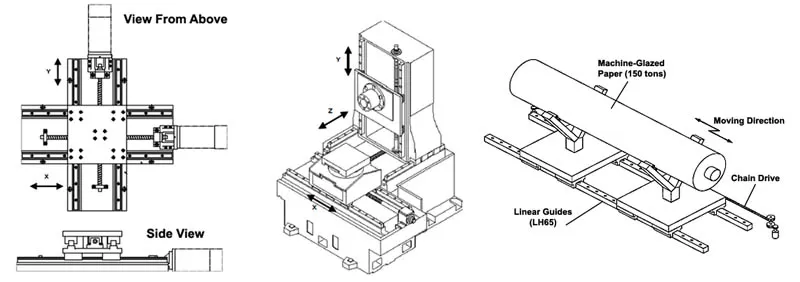Linear guides may not be the most conspicuous components of machinery, but they play a crucial role in ensuring the smooth and precise movement of various mechanical systems. Whether it's in manufacturing, automation, robotics, or even in everyday devices like printers and scanners, linear guides are indispensable for facilitating motion along a straight path. So, what exactly is the purpose of a linear guide, and why are they so essential?

-
Facilitating Precise Motion: At its core, the primary purpose of a linear guide is to facilitate controlled and precise linear motion. It acts as a track or rail along which a carriage or slider can move with minimal friction and high accuracy. This precision is critical in applications where positioning, speed, and repeatability are paramount.
-
Ensuring Stability and Rigidity: Linear guides provide stability and rigidity to the moving components of a system. By guiding the motion along a predefined path, they prevent unwanted vibrations, deflections, and misalignments that can compromise the performance and accuracy of machinery. This stability is particularly crucial in high-speed or high-load applications where even slight deviations can lead to significant errors.
-
Supporting Heavy Loads: In many industrial applications, machinery needs to handle heavy loads while maintaining smooth motion. Linear guides are designed to support these loads efficiently, distributing the weight evenly along the rail to prevent sagging or bending. This capability ensures that the system can operate reliably under demanding conditions without sacrificing performance.
-
Minimizing Friction and Wear: Friction is the enemy of precision and efficiency in mechanical systems. Linear guides incorporate various mechanisms, such as recirculating ball bearings or roller elements, to minimize friction between the moving parts. This not only reduces the energy required for operation but also extends the service life of the components by minimizing wear and tear.
-
Enhancing Accuracy and Repeatability: Whether it's in CNC machines, 3D printers, or semiconductor manufacturing equipment, maintaining consistent accuracy and repeatability is crucial for achieving high-quality results. Linear guides provide the foundation for achieving these standards by ensuring that the motion is smooth, predictable, and consistent, even after repeated use over time.
-
Enabling Modular Design and Integration: Linear guides are often designed to be modular, allowing engineers to customize and integrate them into diverse systems and configurations. This modularity simplifies the design and assembly process, reduces lead times, and facilitates easier maintenance and upgrades as technology advances.
In summary, the purpose of a linear guide goes far beyond simply guiding motion along a straight path. It is an essential component that underpins the performance, accuracy, and reliability of countless mechanical systems across various industries. From enhancing precision to supporting heavy loads and minimizing friction, linear guides play a critical role in enabling the seamless operation of machinery and equipment. So, the next time you marvel at the precision of a CNC machine or the smooth motion of a robotic arm, remember that it's the humble linear guide working behind the scenes to make it all possible.


 +8615622924499
+8615622924499
 +8615622924499
+8615622924499

